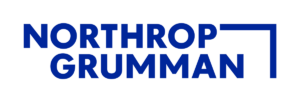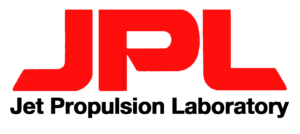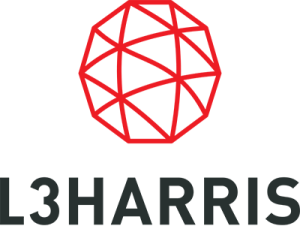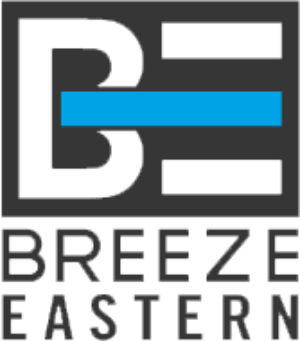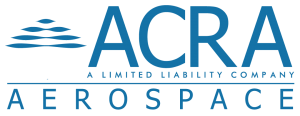How to Develop a Strong Employee Development Plan for Your Organization

Investing in employee growth is crucial for long-term organizational success. While onboarding and initial training lay the foundation, continuous development helps employees enhance their skills and advance in their roles. A well-structured employee development plan drives individual growth and fosters job satisfaction, retention, and leadership readiness. By fostering an environment focused on learning and development, businesses can ensure their workforce remains engaged, skilled, and ready to meet future challenges.
What Is an Employee Development Plan?
An employee development plan is a structured approach to helping your workforce grow professionally. It involves identifying skills employees need to improve for their current roles and preparing them for future responsibilities within your company. A solid plan considers both the needs of the employee and the organization, creating a win-win situation where employees feel valued, and the company gains skilled workers.
Types of Employee Development Plans
Employee development plans come in various forms, each designed to address specific needs within an organization. The success of these plans depends on how well they align with both the employee’s growth aspirations and the company’s objectives. Here’s a closer look at the key types of employee development plans:
- Enhancing Skills in the Current Role
This development plan focuses on improving an employee’s existing skills to help them excel in their current position. It emphasizes refining key competencies and staying updated with industry trends. For example, a software developer might be encouraged to master new coding languages or tools to increase their productivity and contribute more effectively to ongoing projects. - Advancing Within the Current Career Path
This plan is designed to prepare employees for growth within their existing career trajectory. It provides the tools and training needed for promotions or expanded responsibilities. For instance, a software developer may be guided to build both technical and leadership skills to move into a senior developer role or take on team leadership duties. - Preparing for a Career Change
This type of development plan supports employees looking to shift to a different role or career track within the organization. It helps them acquire the new skills and knowledge necessary for a successful transition. For example, a software developer aiming to move into a managerial role might receive training in leadership, communication, and project management to prepare them for the switch from technical work to team oversight.
Benefits of Employee Development Plans
Employee development plans are essential for keeping organizations competitive and agile. A well-implemented plan offers several key benefits that drive both individual and organizational success:
- Improved Employee Retention: Employees who feel supported in their professional growth are more likely to stay with the company, reducing turnover rates.
- Engagement Driving Adaptability: Development opportunities keep employees motivated and engaged, as well as enhance their ability to adapt to new challenges, technologies, and market trends. Increased engagement leads to greater flexibility and readiness for change, ensuring the organization remains competitive.
- Leadership Readiness: Development plans prepare high-potential employees for leadership roles, ensuring a smooth transition when senior positions open up.
- Enhanced Job Satisfaction: Providing growth opportunities fosters a sense of value and fulfillment among employees, making them more committed to their roles.
Industry Applications of Employee Development Plans
In private equity, employee development plans are essential for selecting and nurturing executive talent. Just as companies use development plans to evolve their workforce, private equity firms seek leaders who can grow within portfolio businesses and drive performance. Executive search firms focus on leadership readiness and adaptability, ensuring that the leaders they place can grow alongside the company—just as a well-implemented employee development plan nurtures internal talent.
Improving Employee Performance
In sectors like private equity, employee performance directly impacts the firm’s success. Continuous learning and skill development are indispensable for employees to stay competitive and effective.
- Higher Productivity: Targeted training improves employees’ technical and strategic skills, enabling them to streamline processes and deliver higher-quality results.
- Goal Achievement: Tailored development plans align employee objectives with the firm’s broader goals, improving outcomes such as increased placement success rates and client satisfaction.
How to Develop a Strong Employee Development Plan
A well-structured employee development plan is essential for fostering growth, improving performance, and ensuring sustained business success. It offers a clear pathway for employees to strengthen their skills, align with company objectives, and prepare for future roles. By carefully addressing the needs of both the organization and its workforce, businesses can craft development plans that increase engagement, improve retention, and cultivate future leadership.
Set Clear, Measurable Goals
Once the skills assessment has been completed, the next step is to establish clear, measurable goals. These goals should follow the SMART framework (Specific, Measurable, Attainable, Relevant, and Time-bound):
- Specific: Clearly define what the employee needs to accomplish. For example, “improve customer relationship management skills” is too vague. Instead, set a goal like “increase customer retention by 10% over the next quarter through CRM enhancements.”
- Measurable: Goals must have measurable outcomes. Whether it’s a percentage increase in performance metrics or the completion of a certification, being able to track progress is essential.
- Attainable: While it’s important to challenge employees, goals should be realistic. Setting unattainable objectives can demotivate and overwhelm the employee.
- Relevant: Goals should align with both the employee’s career ambitions and the organization’s strategic objectives.
- Time-bound: Assign a clear timeline for achieving the goal. Deadlines create urgency and provide a structure for measuring progress.
Identify Development Opportunities
Development opportunities take many forms, from formal training programs to hands-on mentorship, and it is essential to align these opportunities with individual needs and career objectives. In industries like manufacturing, where technical expertise and adaptability are critical, offering the right development opportunities can significantly enhance productivity and drive innovation. Manufacturing employees benefit from skill-enhancing initiatives that keep them up to date with industry advancements, new technologies, and evolving processes.
Here’s how organizations can maximize development opportunities:
- Training Programs: Manufacturing is an industry where technical accuracy and updated knowledge are paramount. Formal training in areas like advanced machinery, safety protocols, or lean principles helps employees enhance their technical expertise and improve efficiency in their roles.
- Workshops and Conferences: Attending industry-specific events is particularly valuable in manufacturing, where staying updated with the latest innovations is critical. Seminars and conferences expose employees to cutting-edge technologies and emerging trends, helping them apply fresh knowledge to their work.
- Mentorship: Mentorship programs are highly effective in manufacturing for transferring specialized knowledge. Experienced engineers or production managers can mentor less experienced team members, accelerating their learning and helping them navigate the industry’s complexities.
- Online Courses: E-learning platforms offer employees the flexibility to learn independently. Courses on automation, robotics, or supply chain optimization help employees improve their technical skills and stay competitive.
- Job Rotations: Cross-departmental rotations in manufacturing give employees broader exposure to different functions, such as operations, quality control, and logistics. This experience helps them understand the full scope of the production process and enhances their ability to contribute across various areas.
In industrial manufacturing, development opportunities are a cornerstone of successful placements. The focus is on placing candidates who meet the technical requirements of their roles and demonstrate potential for continuous growth. Companies ensure that the leaders they hire are provided with the right development opportunities, such as leadership training or cross-functional exposure, to drive long-term success.
Implement Regular Check-Ins and Feedback
Development plans are only as effective as their implementation. To ensure success, it’s essential to maintain ongoing communication through regular check-ins and feedback sessions.
- One-on-One Meetings: These provide dedicated time for the employee and manager to discuss progress, identify challenges, and adjust the plan as needed.
- Feedback Loops: Regular feedback helps employees stay on track and motivated. Whether the feedback is positive or constructive, it provides the guidance necessary for continuous improvement.
- Adjust as Needed: Sometimes, initial goals may need to be adjusted based on changing business needs or new challenges that arise. Flexibility is key to keeping the development plan relevant and achievable.
Partner with the Right Executive Search Firm
Developing a strong employee development plan is essential for retaining top talent, boosting employee satisfaction, and ensuring the long-term success of your organization. By setting clear objectives, identifying development opportunities, and aligning plans with organizational goals, you create a roadmap for growth that benefits both your employees and your business.
At BOB Search, we understand the importance of leadership in driving organizational success. Our Performance-Based Search System ensures that we identify candidates who not only meet the technical requirements of the role but also align with your company’s long-term goals.
If you’re looking for top-tier talent to lead your organization, BOB Search is your partner in success. Let us help you find leaders who can drive revenue, efficiency, and market growth, ensuring that your business thrives in today’s competitive environment. Reach out to us today to learn how we can support your executive search needs.






